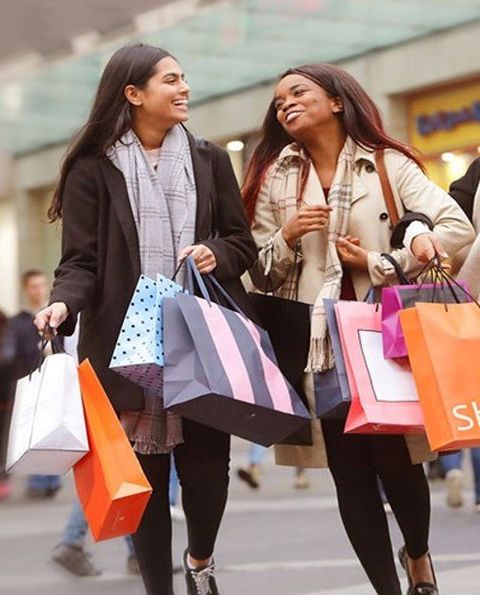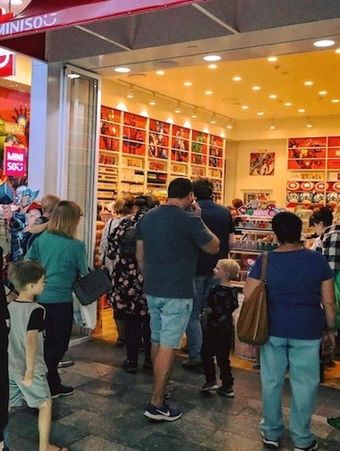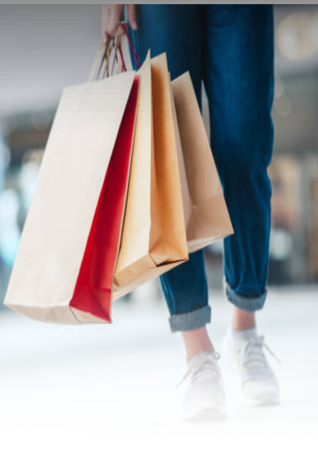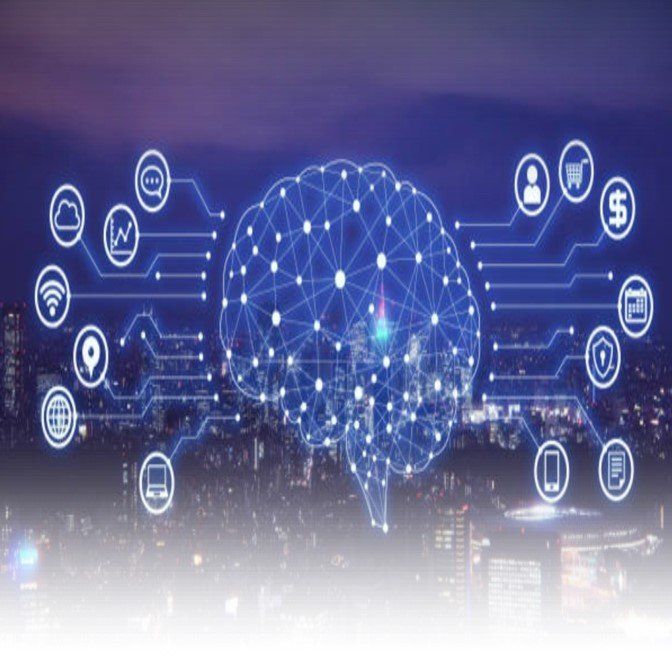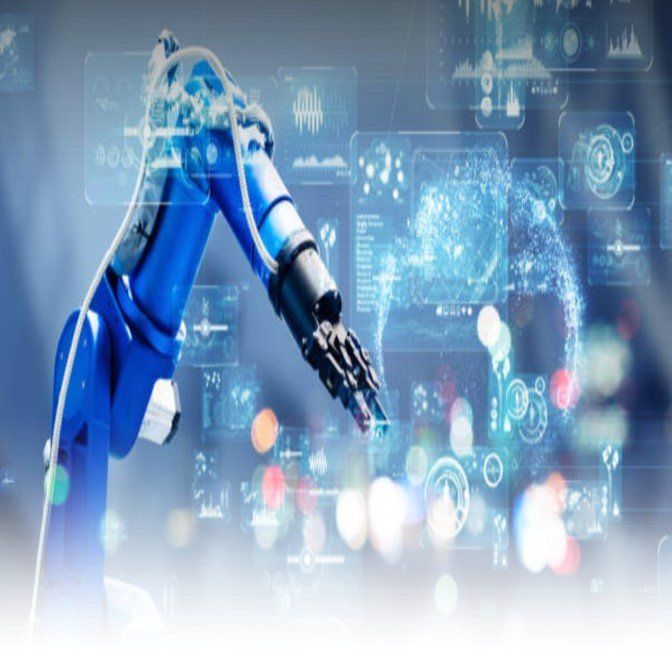Embrace Digitalization with Xenolytix
It has been a tumultuous time for Retail. The surge in online shopping is here to stay, especially given the hurdles presented by the COVID-19 pandemic and the closure of brick-and-mortar stores. Retail’s imperative is to make stores safer, more efficient, and more productive, as well as continue investment in e-commerce infrastructure. E-commerce continues to drive retailer growth and blending online and in-store shopping is creating more meaningful experiences.
Move over FOMO (fear of missing out). Thanks to COVID-19, consumers are now experiencing FOGO (fear of going out). Social Commerce — native shopping experiences on a social media platform — offers shoppers an even more seamless way to shop online. Instead of clicking through to a third-party website, users can make purchases right from the social media app or site.
The Pandemic has greatly shifted customer demand in the retail space. Understanding how to predict and take advantage of these shifts is a vital component of staying on top of the industry. Machine Learning helps improve automatic demand forecasting, inventory planning, relationship management for both customers and suppliers, logistics, manufacturing, and marketing.
Since the “try-before-you-buy” approach is more difficult to manage while adhering to public health, retailers are using virtual fitting rooms with the aid of augmented reality. Data Science can be applied to the volumes of data available to retailers to create personalized shopping experiences.
IoT, Vision Systems, and Machine Learning are helping create a staff-free, cashier-less brick & mortar store. The IoT network in the store tracks what consumers place into their cart. When they leave the store, the store automatically charges the credit card that the customer has on file.
Technologies like Machine Learning, Data Science, IoT, Computer Vision, Augmented Reality, and more have shown that the current challenges have been an opportunity for improvement. Leveraging new digital strategies helps the brand re-energize the customer journey.
At Xenolytix, we understand the importance of becoming digital. We use the latest emerging technologies to transform Retail business. Embrace Digitalization with Xenolytix.
In-Store Experience
IoT based cashier-less checkout, AR-enabled virtual changing rooms.
Personalized Experience
Leverage consumer behavior, preferences, and customer journey with Data Science.
Streamline Operations
IoT based Automated Checkouts, Robot Employees and Smart Shelves
Visual Search
Drive conversion by using visual AI to help shoppers find products
Agile Retail Logistics
Rising digital literacy among consumers and the emergence of e-commerce has transformed the world of retail logistics. Retail logistics is notorious for large amounts of siloed data and its heavy dependence on manual processes. When COVID struck and limited companies’ human workforces and budgets, the industry accelerated adoption of warehouse automation technologies.
Consumers expect more from their purchases, but retailers can’t offer any provenance other than the seal on the container. Having product provenance is critical as consumer skepticism is growing. Blockchain can offer the provenance as the consumer can track or see the entire supply chain of a single product- all the way from suppliers to the end-consumer who bought it.
The lack of proper maintenance of the supplier channel hinders this industry from growing. Retailers could use smart contracts as a guarantee of payment. Hyperledger Fabric could greatly assist with food traceability such as organic farming. Blockchain can essentially digitize the entire supply-chain, removing time-consuming paper processes.
Retailers turn to the Internet of Things (IoT) that offers real-time visibility into the product journey and empowers them to leverage up-to-date insights to increase customer satisfaction. IoT-enabled sensors can also be attached to package containers out for delivery to monitor environmental conditions (e.g., temperature, humidity, tilt) that may impact product quality and result in shipping losses or errors.
Machine Learning and Data Science Analytics greatly help retailers have the right products at the right time. Supply chain capabilities is one of the key differentiators that sets apart top retailers from the rest.
Understanding Customer’s Choices to Boost ROI
Data science provides a great opportunity for retailers to take advantage of the customer data they own and turn it into actionable insights that will end up boosting revenue. There are endless possibilities offered by Data Science to the retailers. Here are some of them:
- Recommendation Engines
- Fraud Detection
- Personalized Marketing
- Price Optimization
- Intelligent Cross-selling and Upselling
- Customer Sentiment Analysis
- Predicting Trends via Social Media Listening
- Customer Lifetime Value Prediction
To stay ahead of the game in today’s age of e-commerce, retailers need to learn how to handle the incoming data and get it ready for analytics. The efficient use of information will enable retailers to take some important data-driven decisions at the right time.
The Future of Shopping
Many retailers still rely on legacy search technologies and age-old methods such as rule-based keyword search. These technologies fail to ensure relevance with simple queries, let alone when more complex and “natural” queries are involved. As brick-and-mortar stores continue to adapt to the rapid rise of e-commerce, retailers need innovative technologies to enhance the online customer experiences and edge above the competition. Natural Language Processing (NLP) is at the forefront in this space.
Listening to what consumers express online via social media becomes imperative for retailers to provide a stellar customer experience.
NLP can divide the text into components to understand the context and the person's intent. Then the machine can decide which command to execute based on the results of the NLP. NLP can provide analyze many more factors, including previous search data and context. The combination of the NLP insights and keyword-based recommendations helps retailers keep visitors interested by getting the recommendations right.
While people searching how they speak is still far from being commonplace, this behavior has been increasing in recent years. Google’s search, Apple’s Siri, and Facebook’s Graph Search are perhaps some of the most well-known cases and are setting the bar very high for retailers. It is time to deliver intuitive search, relevant recommendations, and behavior-based personalization with NLP for every part of the shopper journey – more relevance translates to more buying.
EXPERTISE IN RETAIL
-
MACHINE LEARNING
LEARN MOREAccelerate Your Business
-
BLOCKCHAIN
LEARN MOREGet Greater Transparency
-
DATA SCIENCE
LEARN MORETransform Data Into Value
-
CLOUD APPS
LEARN MORESpeed. Reusability. On-Demand Infrastructure.
-
NLP
LEARN MOREImprove Customer Experience.
-
IoT
LEARN MOREAccess Information in Real-Time
Let's Connect
Take the first step by speaking with one of our experts today.
Contact Us
We will get back to you as soon as possible.
Please try again later.

